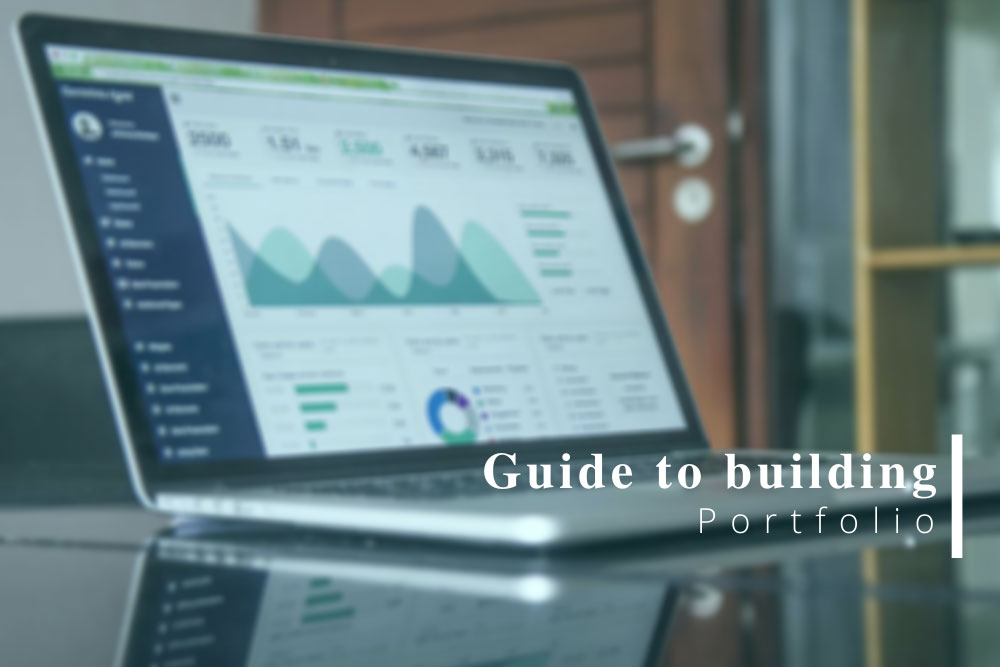What is an investment portfolio?
The investment industry has its dialects. One such word is “investment portfolio”, and it refers to a collection of all invested assets. It can include stocks, mutual funds, commodities, bonds, or ETFs (exchange-traded funds).
An investment portfolio is more of an abstract approach than a physical entity. A good investment portfolio requires creativity and an appetite for variety. It’s a set of all your assets under one metaphorical umbrella.
There is not an easy way to build a great investment portfolio, but here we provide you with some ingredients that can add to the whole taste of an investment portfolio. Some of these rules or tricks might look elementary but are vital to the overall health of the portfolio. Many investors try to skip these rules but regret later not following them.
The application of these rules will prominently depend on your strategies and investment situations.
A set of clear investment objectives
The first and foremost step to building a sound investment portfolio is to know how you want to invest your money. If you’re wandering without a destination, you will be nowhere. You must have a direction and a purpose. Common investment objectives and goals include capital preservation, appreciation, income, and speculation strategy.
The portfolio which focuses on income will look different from the one that aims to achieve capital preservation. They will also perform and function differently over time. Having clear goals is very crucial to paint you a picture in what you’re getting at. Otherwise, you’re likely to get disappointed in your profit appropriations and returns.
Asset allocation
One needs to clarify the current situation, risk tolerance, and future capital needs to ascertain how investments should be allocated among different assets. If you want greater returns, you must be prepared to bear significant losses too.
For instance, the people who make investments for an additional source of income can afford to take more risks as compared to people who invest in making a living.
Aggressive and Conservative Investors:
The more risk an investor is ready to take, the more aggressive his or her portfolio will become. On the opposite, when lesser risk is assumed, the more conservative the portfolio will be.
An aggressive portfolio will include more investments in securities like equities and forex and fewer investments in bonds and other fixed-income securities. On the other hand, a conservative portfolio tends to safeguard value. For eclipsing the shadow, one can choose brokers like T1Markets, ABInvesting and Global TradeATF. They may serve every type of trader.
Minimizing investment turnover and costs
If you are investing in short-term trade, you’re likely to incur more tax rates. You have also projected too high volatility. On the other hand, If you’re holding on to investments for a long time, you will have more tax advantages, even on dividends as they are taxed at lower rates.
Short-term positions are closely associated with trading rather than investing.
Finding ways to reduce costs on unnecessary commissions, mutual fund expenses, brokerage early on in your investment time period could help you save a lot of money.
Dividing capital among the asset class
Once, you have decided the asset allocation; you need to appropriate your capital between those assets. The assets can be broken down into different classes, subclasses and have differential risks and returns associated with them. The investor must choose wisely whilst allocating capital towards different assets.
- Stock picking – Choose the stocks that can satiate the risks you are assuming. The essential factors to consider while including stocks in your portfolio are market cap, stock type, sector. A more in-depth analysis of each element would give plausible knowledge to the investor.
- Bond picking – While choosing bonds, one must consider factors like the maturity period, bond type, credit rating.
- Mutual funds – Mutual funds are available for a variety of assets and allow you the liberty to stick with stocks and bonds that are picked up by professional fund managers. These fund managers charge a fee which is deducted from your profits. You can also opt for index funds which have a lower fee structure but are passively managed.
- ETFs (Exchange-traded funds) – If you don’t want to opt for mutual funds, then ETFs are a good option for you. They are mutual funds that can be traded like stocks. They’re the same as mutual funds as they give way to a wide range of stocks. But the difference is that they’re not actively managed. They offer more cost optimization over mutual funds and can be a great option to diversify the portfolio.
Rebalancing the portfolio
Over time, your asset allocation may go out of shape. If some stocks increase their value, your portfolio may get disproportionate. Rebalancing, therefore, means restoring the portfolio to its original structure. Experts recommend balancing at particular time intervals such as annually or every six months or when the value of any asset changes. One must also consider tax implications while adjusting and rebalancing the portfolio.
Diversity
Diversity is one of the essential traits of a successful portfolio. One should never put all of her/his money into one single investment or asset. By diversifying, you’re spreading the risks into different categories and therefore, minimizing them.
Bottom line
During the whole process of building a portfolio, you must remember intuitive diversification more than anything else. You must also keep your overall financial situation in mind while developing an investment portfolio.

